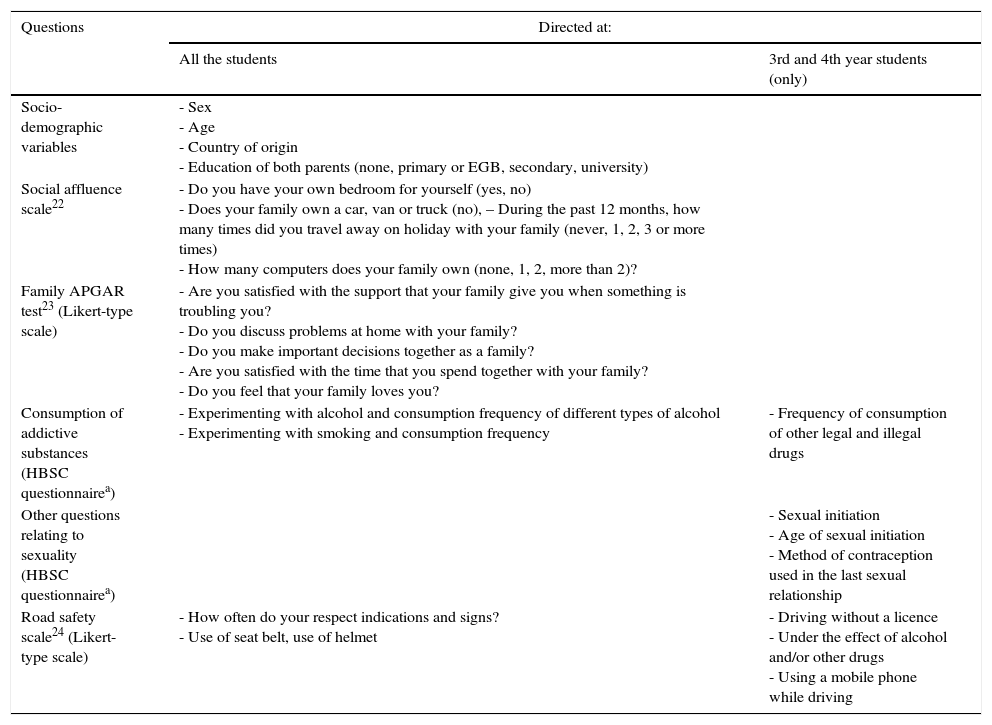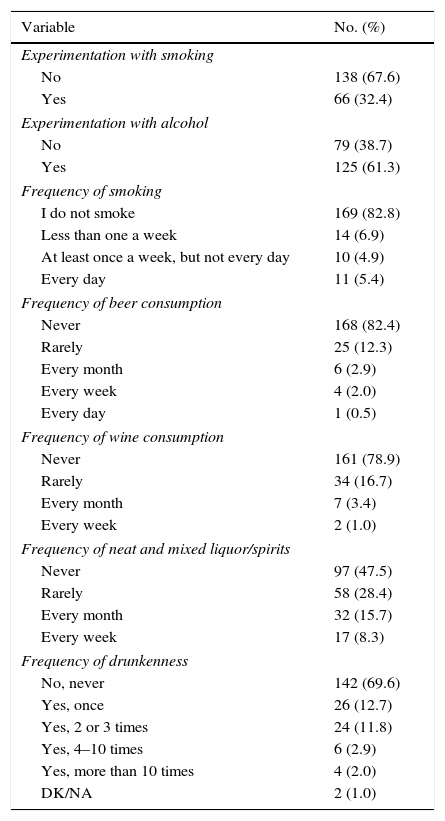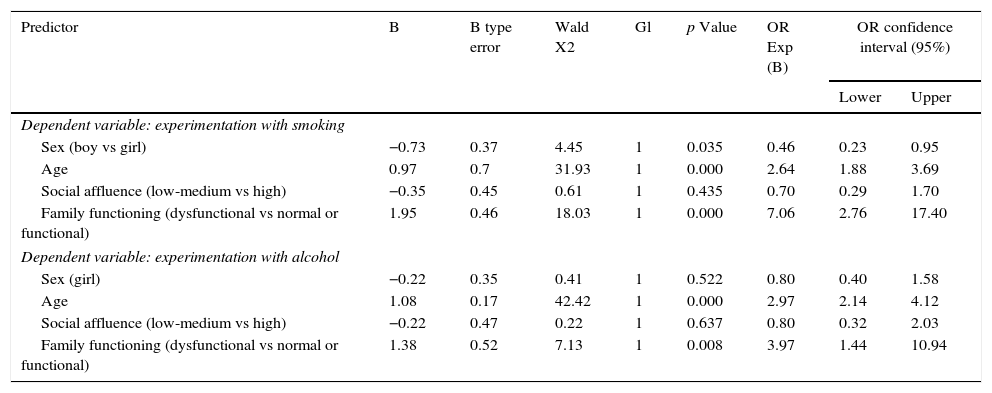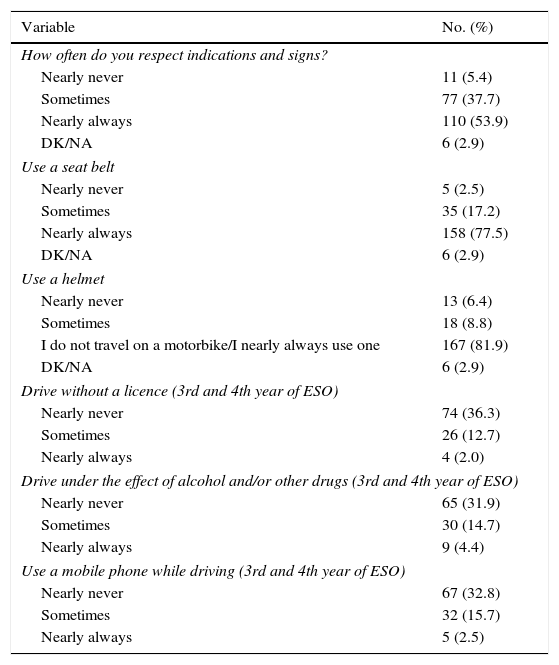Risk behaviours in adolescents can lead to serious disorders, therefore the objectives of this work are to characterise the lifestyles of teenagers about substance use, sex, and road safety, and to meet socio-demographic factors associated with these.
MethodA cross-sectional, descriptive and correlational study was conducted with 204 school-age-children from 12 to 17 years, in 2013. They were given a validated questionnaire about sociodemographic, family functioning, and lifestyles such as substance abuse, sexual intercourse and road safety. A descriptive and multivariate analysis was performed by using multiple linear regression in the case of quantitative dependent variables, and binary logistic regression models in the case of binary categories. Data analysis was based on SPSS 20.0, with a significance level of p<0.05.
Results32.4% of students had smoked, and 61.3% had drunk alcohol. 26% of adolescent between 14 and 17 years had sexual intercourse; the average age of the first sexual intercourse was 14.9 years. 85.2% used condoms. 94.6% respected traffic signs, 77.5% used to wear a seat belt and 81.9% a helmet. Family functioning, as protective factor, was the variable more frequently associated to risk behaviour: smoking (OR=7.06, p=0.000), alcohol drinking (OR=3.97, p=0.008), sexual intercourse (OR=3.67, p=0.041), and road safety (β=1.82, p=0.000).
ConclusionsAccording the results, age, gender and family functioning are the main factors associated with the adoption of risk behaviours. This information is important for the development of public health policies, for instance health promotion at schools.
Las prácticas de riesgo en la adolescencia pueden conducir a trastornos serios, por lo que este trabajo tiene por objetivos caracterizar los estilos de vida de adolescentes respecto al consumo de sustancias, relaciones sexuales, y seguridad vial, y conocer los factores sociodemográficos asociados con estos.
MétodoSe realizó un estudio transversal, descriptivo y correlacional, con 204 escolares de 12 a 17 años, durante el año 2013. Se administró un cuestionario validado, con preguntas sobre variables sociodemográficas, funcionamiento familiar, y estilos de vida en cuanto en dichas áreas. Se realizaron análisis descriptivos y multivariantes mediante modelos de regresión lineal múltiple para variables dependientes cuantitativas, y de regresión logística binaria para categóricas binarias. El análisis de datos se apoyó en SPSS 20.0 (p<0,05).
ResultadosEl 32,4% de los estudiantes había fumado, y el 61,3% consumió alcohol. El 26% de los escolares entre 14-17 años mantuvo relaciones con penetración (edad media de inicio = 14,9 años). El 85,2% usó preservativo. El 94,6% respetó señales de tráfico, el 77,5% solía usar cinturón de seguridad, y el 81,9% el casco. El funcionamiento familiar fue el principal factor de protección asociado: consumo de tabaco (OR=7,06, p=0,000), consumo de alcohol (OR=3,97, p=0,008), relaciones sexuales completas (OR=3,67, p=0,041) y seguridad vial (β=1,82, p=0,000).
ConclusionesEdad, sexo y estado de funcionamiento familiar fueron los principales factores asociados a los estilos de vida. Esta información es importante para el desarrollo de políticas de salud pública, como la promoción de la salud escolar.












